Children are especially vulnerable to feeling overwhelmed or like their emotions are too big to handle, and educators who prioritize social-emotional learning in school can make a world of difference. This curated list of SEL children’s books will support teachers’ efforts.
Children’s Books for Teaching and Practicing SEL
Teaching SEL can often feel like an abstract challenge: how do you teach about something as broad and fluid as emotions? It also takes time, effort, and experience to master these skills – and that’s why it’s so important to begin learning about them early on. The six children’s books listed below make the job easier by blending SEL concepts into colorful stories and stress-melting exercises.
Each title has been carefully selected because it teaches children about their emotions and how to process them in an engaging, accessible way. The stories and activities tucked inside their pages can work perfectly in a classroom or at home. Maybe they’ll teach you something new, too!
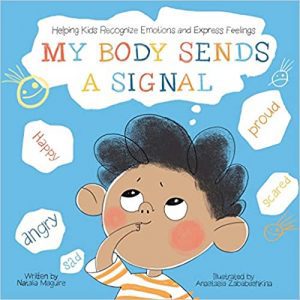
1. My Body Sends a Signal: Helping Kids Recognize Emotions and Express Feelings by Natalia Maguire
Through a story about a young boy experiencing big emotions, Natalia Maguire’s excellent book helps children put language to challenging feelings. My Body Sends a Signal connects big emotions to physical sensations that children feel when they are excited, sad, angry, and frightened. It reassures children that acknowledging all of their feelings is perfectly okay and that negative, overwhelming emotions don’t last forever. The book also provides children with strategies that they can use to regulate their emotions, like breathing slowly while counting to ten and squeezing their fists to keep their anger trapped in their hands.
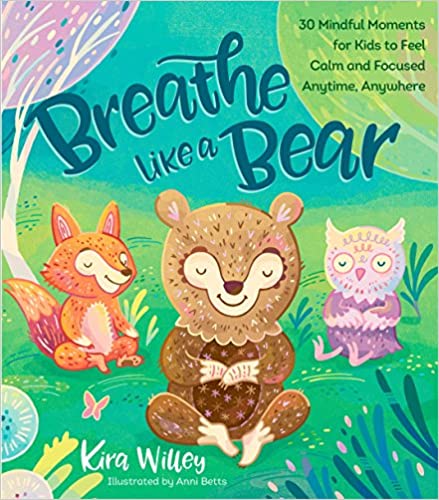
2. Breathe Like a Bear by Kira Willey
The book Breathe Like a Bear provides children with 30 breathing exercises they can do with their parents, teachers, or on their own. The book’s five sections (Relax, Be Calm, Focus, Make Some Energy, and Imagine) each feature exercises tailored to a specific scenario or emotional need. A wonderful addition to your home or school library, Kira Willey’s book shows children that managing their emotions doesn’t have to look like sitting still with their eyes closed in a dark room, getting a little sleepy. It can be fun, give them more energy, enhance their creativity, and help them focus.
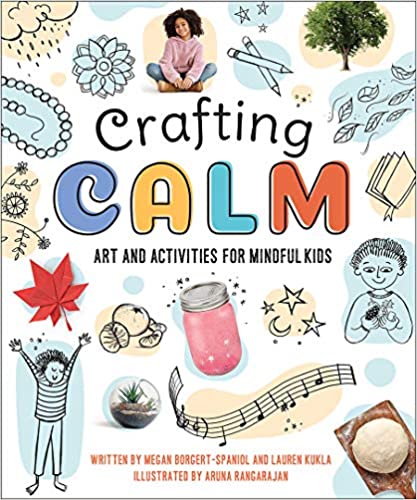
3. Crafting Calm: Art and Activities for Mindful Kids by Megan Borgert-Spaniol
Sitting still and keeping quiet can be difficult for a lot of kids. Luckily, that’s not the only way to practice mindfulness! Crafting Calm: Art and Activities for Mindful Kids provides instructions for a variety of artistic projects that kids can work on to let off steam and tap into their inner creative. The activities are simple and can be easily worked into a classroom routine or done at home. After each project has been completed, the book provides instructions on how to put the finished piece to use as a tool for dealing with stress or difficult emotions. This book is for every kid who finds peace in art and the creative process.
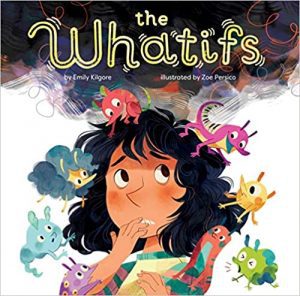
4. The Whatifs by Emily Kilgore
The Whatifs tells the story of a young, anxiety-riddled girl named Cora as she prepares for a big piano recital. The author describes her anxiety as being caused by little monsters (the Whatifs) who whisper what-if questions into her ear, making her doubt herself. By characterizing anxiety in this way, the story helps children understand what anxiety is and how it can make someone feel. The story ends with Cora making a new friend, who explains how to transform her negative what-ifs into positive what-ifs with a simple shift in mindset. The book proves that with the help of a friend or a supportive adult, even the toughest negative thoughts, worries, and fears can be changed.

5. The Good Egg by Jory John
Jory John’s story The Good Egg, about a perfectly behaved egg who starts to crack under the pressure of perfectionism, is an excellent book for teaching children about the importance of self-care and not sweating the small stuff. The plot follows the Good Egg as he tries to navigate life with his misbehaving siblings, the Bad Eggs, who are always getting into trouble and causing him to stress out. Through its fun illustrations and humorous plot, the book teaches children how to prioritize themselves and their wellness when they’re placed in stressful situations. The book also has strong familial themes and can show children that even if their siblings are very different from them, they can find common ground and get along.
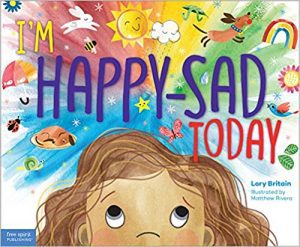
6. I’m Happy-Sad Today by Lory Britain
Emotions can be tricky and often contradicting. Sometimes you might feel happy, but with a little tinge of sadness. Or excited (and a bit nervous) about a new opportunity. As adults, we’re equipped to make sense of mixed emotions. Kids on the other hand, might really struggle with these conflicting feelings. Lory Britain’s book I’m Happy-Sad Today helps children tackle these confusing emotional combos and make sense of them. Using witty wordplay, Britain provides new words to describe multifaceted feelings, and encourages children to create their own. By having the language to talk about difficult emotions, children feel more empowered to share what’s on their minds and be confident that they will be understood.
Emotional Well-Being on Every Page
If you’re looking to include SEL in your teaching practice, but aren’t sure how, these books are a great place to start. Each title covers a different topic within social emotional learning and together, they help the children in your life develop a holistic understanding of their emotions and how to process them. The skills that these six books teach are invaluable and will serve your students long after they’ve left your classroom. Check them out!


